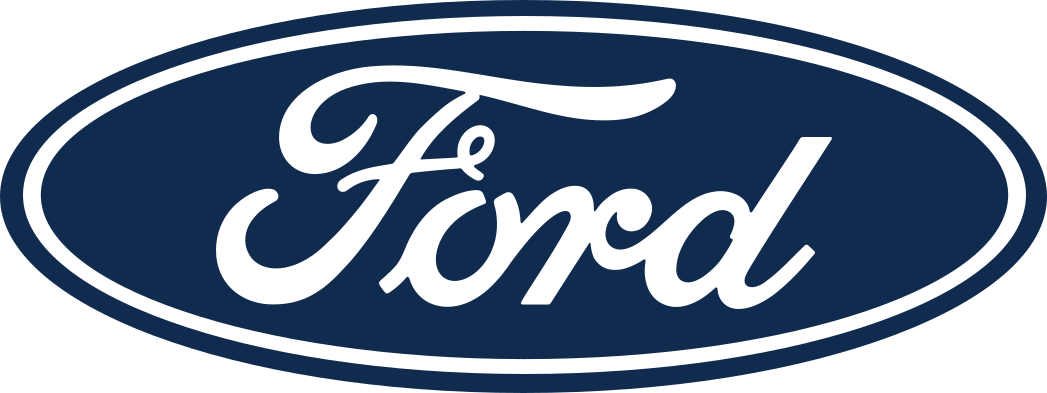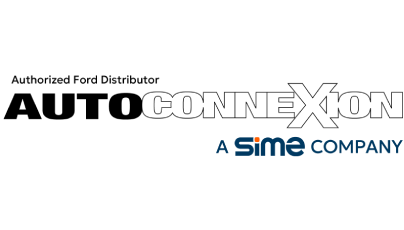SUPERIOR VALUE FROM EVS, COMMERCIAL BUSINESS, CONNECTED SERVICES IS STRATEGIC FOCUS OF TODAY’S ‘DELIVERING FORD+’ CAPITAL MARKETS DAY
- Company to detail priority areas of Ford+ plan for growth and value creation based on ‘always-on’ customer relationships and leadership in electric vehicles, connected services
- Expects 40% of Ford global vehicle volume to be all-electric by 2030; raises planned electrification spending to $30+ billion by 2025, including development of IonBoost batteries
- Announces creation of Ford Pro vehicle services and distribution business, fully dedicated to high productivity requirements of commercial and government customers
DEARBORN, Mich., May 26, 2021 – Zero-emission electric vehicles and advanced connectivity are transforming commercial and personal transportation, and Ford is leading that revolution – with compelling services and platforms based on cutting-edge electrical architectures and battery technologies.
The company is applying innovation in those and other areas to stand up Ford Pro, making Ford the first auto manufacturer with a fully dedicated commercial vehicle services and distribution business.
And the underlying Ford+ plan for growth promises always-on benefits for customers – along with new ways for investors to think about how they value the company.
Those are expected to be primary takeaways Wednesday when Ford CEO Jim Farley and other senior leaders expand on the company’s customer-focused strategic ambitions and actions in a virtual meeting with financial analysts and other stakeholders.
The Ford event – themed “Delivering Ford+” – will open for registration at 9:15 a.m. EDT today and will start promptly at 9:30 a.m., with access and supporting material at shareholder.ford.com.
“I’m excited about what Ford+ means for our customers, who will get new and better experiences by pairing our iconic, world-class vehicles with connected technology that constantly gets better over time,” said Farley. “We will deliver lower costs, stronger loyalty and greater returns across all our customers.
“This is our biggest opportunity for growth and value creation since Henry Ford started to scale the Model T, and we’re grabbing it with both hands.”
Delivering Ford+
During the event, Farley will relate how Ford is breaking away from the transactional, build-and-sell business model that has typified the auto industry for decades. Instead, Ford+ is characterized by close, enduring customer relationships – enabled by the company’s foundational strengths, improving financial performance, and capabilities and investments in disruptive technologies.
At the core of those capabilities is Blue Oval Intelligence, Ford’s next-generation, cloud-based platform for integrating electrical, power distribution, computing and software systems in connected Ford and Lincoln vehicles.
Presentations will detail where, why and how the company is headed with fully electric vehicles, commercial solutions and connected services – and how customers will benefit. CFO John Lawler said Ford is allocating capital to those priority areas to produce value for customers and shareholders.
“We’re fueling Ford+ by further strengthening our core automotive operations and generating consistently healthy cash flow that will fund growth and create value,” said Lawler.
The company expects to deliver an 8% adjusted EBIT (earnings before interest and taxes) margin in 2023.1
Today’s event will address how Ford is:
Leading the Electrification Revolution
# # #
- Accelerating investments and increasing planned total spending on electrification, including battery development, to more than $30 billion by 2025 – while deriving efficiencies from Ford’s flexible EV architecture and modular technologies.
- Anticipating 40% of Ford’s global vehicle volume to be fully electric by 2030, including from:
- Mustang Mach-E, which is bringing new customers to Ford – 70% of buyers, to date
- The F-150 Lightning, an all-electric version of the world’s most popular pickup truck, which has amassed 70,000 customer reservations since it was unveiled one week ago, and
- E-Transit commercial vans, which will be on the road later this year.
- Investing in battery technology and equipping Ford to design, engineer and manufacture its own batteries, with key developments including:
- Creating Ford Ion Park, a global center of battery excellence comprising more than 150 experts in battery chemistries, testing, manufacturing and value-chain management who will boost battery range and lower costs to customers and Ford
- Vertically integrating battery technology with an extensive range of EV batteries – IonBoost lithium ion; IonBoost Pro lithium iron phosphate for commercial vehicles; and long-range, low-cost solid-state batteries based on Ford’s own engineering and know-how from Solid Power, in which the company holds an equity stake, and
- Forming a joint venture, BlueOvalSK, with SK Innovation to manufacture battery cells and arrays at two plants in the U.S. for future Ford and Lincoln vehicles.
Creating a Business Dedicated to Commercial Customers
- Establishing Ford Pro, a global vehicle services and distribution business within Ford devoted to commercial and government customers, and led by Ted Cannis, who’s been named CEO and a corporate officer.
- Cannis has been head of Ford’s North America CV business and previously managed the Team Edison EV development group.
- Providing customers with greater value and higher productivity through:
- The industry’s most comprehensive and flexible range of electric and internal-combustion commercial vehicles
- Digital and physical services that can help optimize and maintain customer fleets
- Public, depot and employee home charging of EVs for the next day’s work, and
- Bundled financing of vehicles, services and charging.
- Increasing the commercial market for hardware and adjacent and new services that’s addressable by Ford – with anticipated company revenue of $45 billion by 2025, up from $27 billion in 2019.
Creating a Business Dedicated to Commercial Customers
- Having about 1 million vehicles that are capable of receiving over-the-air system updates on the road by the end of this year, exceeding Tesla’s volume by July 2022, and scaling to
33 million OTA-enabled Ford and Lincoln vehicles by 2028.
- Strengthening customer relationships with digitally enabled tools like Ford Pass and Lincoln Way, online ordering, simplified financing and renewal options, vehicle pick-up and delivery, and mobile repairs.
- Speeding detection and resolution of quality issues using connected data – helping to raise customer satisfaction and lower warranty costs.
- Deploying distinctive connected functions like Ford’s BlueCruise driver-assist technologies, new features and upgraded software content, and EV charging to improve the user experience – and capitalize on what is projected to be a $20 billion market for such services by 2030.
Note: IHS Markit global vehicle registrations are compiled from government and other sources and capture 95 percent of global new vehicle volumes in more than 80 countries. Sports cars, as defined by IHS Markit, include all vehicles in the IHS Markit Global Sports Car segment. Mustang is America’s best-selling sports car over the last 50 years, based on Ford analysis of 1966-2018 total U.S. new vehicle cumulative registrations for all sports car segments supplied by IHS Markit.
###
1 When Ford provides guidance for adjusted EBIT margin, it does not provide guidance for the most comparable GAAP measure because, as described in more detail in “Non-GAAP Financial Measures That Supplement GAAP Measures” in Ford’s Annual Reports on Form 10-K and Quarterly Reports on Form 10-Q, the GAAP measure includes items that are difficult to predict with reasonable certainty.
Cautionary Note on Forward-Looking Statements
Statements included or incorporated by reference herein may constitute “forward-looking statements” within the meaning of the Private Securities Litigation Reform Act of 1995. Forward-looking statements are based on expectations, forecasts, and assumptions by our management and involve a number of risks, uncertainties, and other factors that could cause actual results to differ materially from those stated, including, without limitation:
- Ford and Ford Credit’s financial condition and results of operations have been and may continue to be adversely affected by public health issues, including epidemics or pandemics such as COVID-19;
- Ford is highly dependent on its suppliers to deliver components in accordance with Ford’s production schedule, and a shortage of key components, such as semiconductors, can disrupt Ford’s production of vehicles;
- Ford’s long-term competitiveness depends on the successful execution of its Plan;
- Ford’s vehicles could be affected by defects that result in delays in new model launches, recall campaigns, or increased warranty costs;
- Ford may not realize the anticipated benefits of existing or pending strategic alliances, joint ventures, acquisitions, divestitures, or new business strategies;
- Operational systems, security systems, and vehicles could be affected by cyber incidents and other disruptions;
- Ford’s production, as well as Ford’s suppliers’ production, could be disrupted by labor issues, natural or man-made disasters, financial distress, production difficulties, or other factors;
- Ford’s ability to maintain a competitive cost structure could be affected by labor or other constraints;
- Ford’s ability to attract and retain talented, diverse, and highly skilled employees is critical to its success and competitiveness;
- Ford’s new and existing products and mobility services are subject to market acceptance and face significant competition from existing and new entrants in the automotive and mobility industries;
- Ford’s results are dependent on sales of larger, more profitable vehicles, particularly in the United States;
- With a global footprint, Ford’s results could be adversely affected by economic, geopolitical, protectionist trade policies, or other events, including tariffs;
- Industry sales volume in any of Ford’s key markets can be volatile and could decline if there is a financial crisis, recession, or significant geopolitical event;
- Ford may face increased price competition or a reduction in demand for its products resulting from industry excess capacity, currency fluctuations, competitive actions, or other factors;
- Fluctuations in commodity prices, foreign currency exchange rates, interest rates, and market value of Ford or Ford Credit’s investments can have a significant effect on results;
- Ford and Ford Credit’s access to debt, securitization, or derivative markets around the world at competitive rates or in sufficient amounts could be affected by credit rating downgrades, market volatility, market disruption, regulatory requirements, or other factors;
- Ford’s receipt of government incentives could be subject to reduction, termination, or clawback;
- Ford Credit could experience higher-than-expected credit losses, lower-than-anticipated residual values, or higher-than-expected return volumes for leased vehicles;
- Economic and demographic experience for pension and other postretirement benefit plans (e.g., discount rates or investment returns) could be worse than Ford has assumed;
- Pension and other postretirement liabilities could adversely affect Ford’s liquidity and financial condition;
- Ford could experience unusual or significant litigation, governmental investigations, or adverse publicity arising out of alleged defects in products, perceived environmental impacts, or otherwise;
- Ford may need to substantially modify its product plans to comply with safety, emissions, fuel economy, autonomous vehicle, and other regulations;
- Ford and Ford Credit could be affected by the continued development of more stringent privacy, data use, and data protection laws and regulations as well as consumers’ heightened expectations to safeguard their personal information; and
- Ford Credit could be subject to new or increased credit regulations, consumer protection regulations, or other regulations.
For Aftersales / Parts / Warranty enquiries, contact our Customer Care Centre at 1300 383 181 Monday – Friday 9AM to 5PM (excluding public holidays) or email customercare.sdac@simedarby.com.
Click the button below to get the conversation started.

